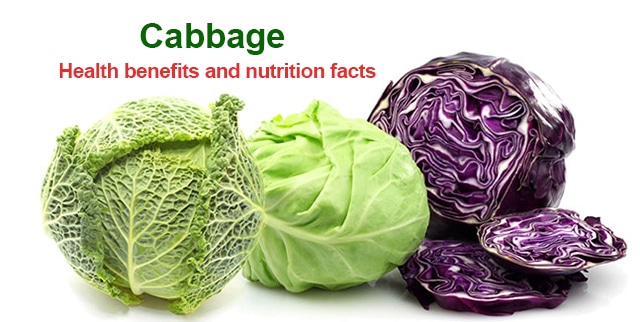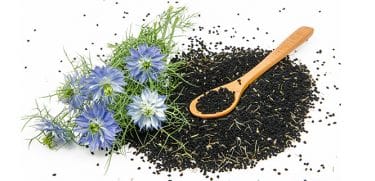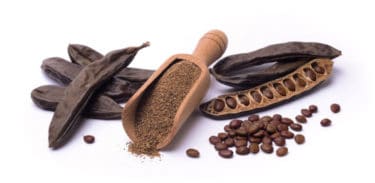Cabbage is one of the very nutritious vegetables from the crucifer family. It is a powerful antioxidant and anti-inflammatory. It protects against heart disease, cancer and fatty liver syndrome. Thanks to the high amounts of vitamins A, K and vitamin C, it is an immune system booster. It protects health of bones and skin. Because it is a rich in potassium, it keeps blood pressure in balance. It is a good source of fiber, so it helps to lose weight. It has cholesterol-lowering properties and prevents build-up of bad cholesterol. Cabbage, an alkaline vegetable, is rich in vitamin B6 and folate. It helps to get rid of toxic substances. Cabbage juice is good for hoarseness and anemia.
Table of Contents
What is cabbage?
It is a super healthy vegetable that reduces the risk of diabetes, obesity and overall mortality, when consumed regularly. It is grown in cool climate and has higher frost tolerance. Purple cabbage is a powerful antioxidant. All cabbage varieties benefit the body in terms of antioxidants. Darker coloured vegetables are more powerful at fighting free radicals.
Vitamins and nutrients contained in cabbage
It contains high amounts of C, K and vitamin A. It is also rich in essential vitamins such as pantothenic acid (B5), pyridoxine (B6), thiamine (B1), riboflavin (B2) and niacin (B3). It contains manganese, magnesium, phosphorus, calcium and zinc minerals, especially sodium and potassium. It is a good source of soluble fiber.
Health benefits of cabbage
Cabbage and heart health
Purple cabbage contains pigments called anthocyanins whose antioxidant capacity is very high. Anthocyanins suppress inflammations that can cause cardiovascular disease. In addition, its high polyphenol content may reduce the risk of cardiovascular disease by preventing platelet formation and lowering blood pressure. Research has shown that food intake rich in anthocyanin reduces the risk of high blood pressure and coronary artery disease.
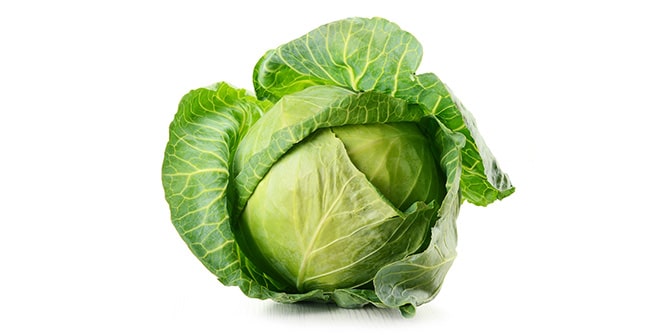
Cabbage and cholesterol levels
It is a reservoir of phytochemicals called isothiocyanates. These antioxidant compounds are effective in reducing the level of bad cholesterol. Studies have shown that people experience a small but significant decrease in LDL cholesterol levels when they eat 2-10 grams of soluble fiber per day. It also contains phytosterol.
These are plant compounds that reduce LDL cholesterol by blocking the absorption of cholesterol in the digestive tract. It was found that the intake of 1 gram of phytoterol per day reduced LDL cholesterol by up to 5%.
Cabbage and high blood pressure (hypertension)
Potassium in cabbage is an important mineral and electrolyte. It helps control heart rate and blood pressure. Potassium relaxes the blood vessel walls against the contracting effects of sodium on the body, and helps to get rid of it through the urine. The manganese found in the cabbage is also required for red blood cell formation.
Cabbage and cancer
Research has shown that anthocyanins and isothiocyanates in cabbage slow down the growth of cancer cells. In addition, high levels of vitamin C and sulforafan in it are being investigated for their anticancerous properties.
It has also been found that the sulforafan enzyme has the power to inhibit the harmful enzyme (HDAC), which is known to play a role in the progression of cancer cells. There are promising results in many types of cancers such as melanoma, breast cancer, esophagus, prostate, colon and pancreas.
Cabbage and immune and digestive system
Cabbage is a carbohydrate, full of intestinal-friendly insoluble fibers. Insoluble fiber promotes bowel movement, helps to keep the digestive system healthy, prevents constipation and increases the beneficial bacteria in the intestine.
These bacteria maintain important functions such as protecting the immune system and producing some vitamins (such as vitamin K2, vitamin B12). Adequate fiber consumption facilitates the elimination of toxins through bile and feces. Its diuretic property provides the removal of toxins from the body. The bad odor that occurs when the cabbage is cooked is due to the sulfuric compounds that cause the digestive system to function properly.
Cabbage pickle is full of probiotics, which are beneficial bacteria in the intestines. They protect the body against many diseases by ensuring that the intestines are healthy. Fermented foods are useful nutrients for your immune system and your digestive system. Consumption of enzymes produced by fermentation facilitate vitamins and minerals absorption.
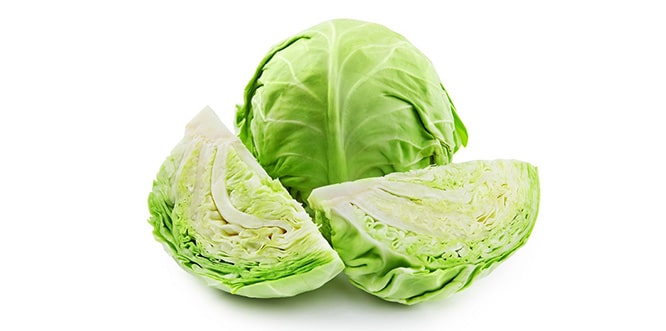
Contains plenty of vitamin C
Vitamin C is a water-soluble vitamin and antioxidant. It is an agent in the formation of the body’s collagen protein. Collagen is the protein-providing part of the skin and supports body tissues such as bones, muscles, ligaments, tendons, and allows them to connect with each other. Regular consumption of cabbage helps the body to develop resistance to infectious agents and prevents the formation of free radicals. 100 grams of white cabbage meets 40% of the daily vitamin C requirement.
Source of Vitamin K
Vitamin K, a fat-soluble vitamin, plays an important role in the body. It is necessary for enzymes responsible for blood clotting. It is also beneficial for bone health and balances the amount of calcium in the body. It has been observed that individuals over 70 years of age maintain their verbal memory performance if they consume enough vitamin K. A serving of cabbage meets the daily need for vitamin K.
Provides protection in radiation treatment
It has been shown that a compound known as DIM and found in radiculars increases short-term survival rates in some animal studies of radiation. According to studies conducted on animals exposed to high radiation, more than 50% of animals to whom DIM was injected survived.
Blood values during radiation treatment were observed to improve. DIM is thought to have protective effects against cancer.
Cabbage and eye health
It contains antioxidants that prevent eye diseases. Its beta-carotene content provides benefit to eye health by converting to vitamin A. Vitamin A enhances night vision functions by strengthening the eyes and prevents aging of the eyes.
Cabbage and weight loss
It is a very low calorie vegetable, 25 calories per 100 grams. Consumed raw, the amount of calories is even less. It is rich in fiber as well as a fat burner when eaten raw and keeps the stomach full for a long time, making it an effective food for people on diet.
How to make cabbage juice?
Boil 1 liter of water, add 10 cabbage leaves, then keep boiling for 5 to 7 minutes with the lid closed. Get the leaves out when it cools down. You can drink this water twice a day.
Benefits of cabbage juice
- It has anti-bacterial properties, it helps remove toxins.
- Mixing it with carrot juice is good for gum disease.
- Sulfur, chlorine and iodine, which gives the smell of cabbage, cleans the bowels.
- Regular consumption of cabbage juice or raw cabbage reduces cellulite.
- It helps women to discharge edema in their menstrual periods.
How to make purple cabbage juice?
Put half a liter of water into a saucepan. After boiling it, add 7-8 leaves of purple cabbage to the pan and keep boiling it. After boiling for about 10 minutes, remove the cabbage from water and allow to cool down.
Benefits of purple cabbage juice
- Purple cabbage cleans the skin.
- Makes blood.
- Accelerates blood circulation.
- Eliminates indigestion.
- Protects against flu infections.
- Removes phlegm and relieves inflammation.
How to choose and use your cabbage?
- When choosing it, make sure the leaves are bright.
- Do not choose those whose leaves have holes or outer leaves have been peeled.
- If it is loose-leafed, remove old and damaged leaves and rinse. If it is tight, peel off the outer leaves, wash and slice.
- Add vinegar to the water when cooking purple cabbage.
- Loose-leafed cabbages can be stored in a cool, dark place for a few days, while tight leafed ones can be stored for longer.
Cabbage recipes
Cabbage soup
Ingredients
- 1 medium size white cabbage
- 2 carrots and 6 cups of water
- 4 medium size tomatoes and 2 large onions
- 1 bunch of parsley and 2 green peppers
- 40 gr. butter and 1 tbsp flour
- 1 teaspoon black pepper and 2 lemon juice
Preparation: Chop the cabbage and the other vegetables. Put water and butter in a medium pot. After boiling, add cabbage, carrots, peppers, onions and tomatoes and cook until tender. Mix the flour and water in a bowl and add to the mixture after filtering. Then add the finely chopped parsley and lemon juice and cook for another 10 minutes.
Pickled purple cabbage
Ingredients
- 1 purple cabbage
- 1 cup of grape vinegar
- 2 tablespoons sea salt
- 1 teaspoon of lemon salt
Preparation: Sprinkle the chopped cabbage with 1 tablespoon sea salt until the color of it changes and leave it aside for 10 minutes. Compress them into the jar. Then, fill the jar with 1 cup of vinegar and water. After adding 1 tablespoon salt and lemon salt, close the lid tightly. Leave it in a cool and dry place for 5 days.
Pickled white cabbage
Ingredients
- 1 medium size white cabbage
- 1 bottle of grape vinegar (1/2 liter)
- 1 liter water and 1 glass of salt
- 1 small cup of lemon salt and 4 cloves garlic
Preparation: Wash and chop the cabbage. Mix the water, vinegar and salts in a bowl. Salt and lemon salt need to melt. Beat the garlic to give its smell and taste. Fill the barrel with the cabbage. Add the garlic and the juice onto it. It will be ready within 4-5 days.
Stuffed cabbage rolls
Ingredients
- 1 medium size white cabbage
- 200 gr. ground beef and 2 medium size onions
- 2 cups of rice and Half cup of bulgur
- 1 tablespoon pepper paste and 1 tablespoon tomato paste
- 1 teaspoon black pepper and 2 table spoon of olive oil
- 1 teaspoon of red flake pepper and salt
Preparation: Boil a pot of water. Add half a tablespoon of salt and press the cabbage leaves in water. Boil until they soften. If they are too soft, it can break apart. Strain the cabbage juice.
Preparation of interior
Mix all the remaining ingredients in a bowl. Wrap as many cabbage leaves as you can with the mix. Place a few cabbage leaves on the bottom of the pot and then place the stuffed cabbage leaves onto them. You can cover the wraps with a plate so that they do not break apart. Add enough water to fill over the top and cook it until they get soft.
Fried white cabbage
Ingredients
- 1 small size white cabbage
- 2 medium size onions and 1 carrot
- Red flake pepper and black pepper
- 1/2 bunch of parsley and 1 tablespoon of olive oil
Preparation: Chop the cabbage leaves. After chopping onions and carrots, put a tablespoon of oil on a large pan. Then, fry onions and carrots. Then add the cabbage, cook it while stirring it. You can add parsley when cooking.
Side effects of cabbage
- Goiter patients should consult the doctor before consuming it.
- It may interact with drugs such as coumadin, warfarin etc.
- People with hypothyroidism and thyroid dysfunction should consume it carefully.
- Its excessive consumption can cause dehydration.
- It can cause intense gas and flatulence.
- Overconsumption of cabbage juice may cause irritation of urinary tract.
- People with diarrhea should not consume cabbage juice.
- It should not be used during pregnancy.

